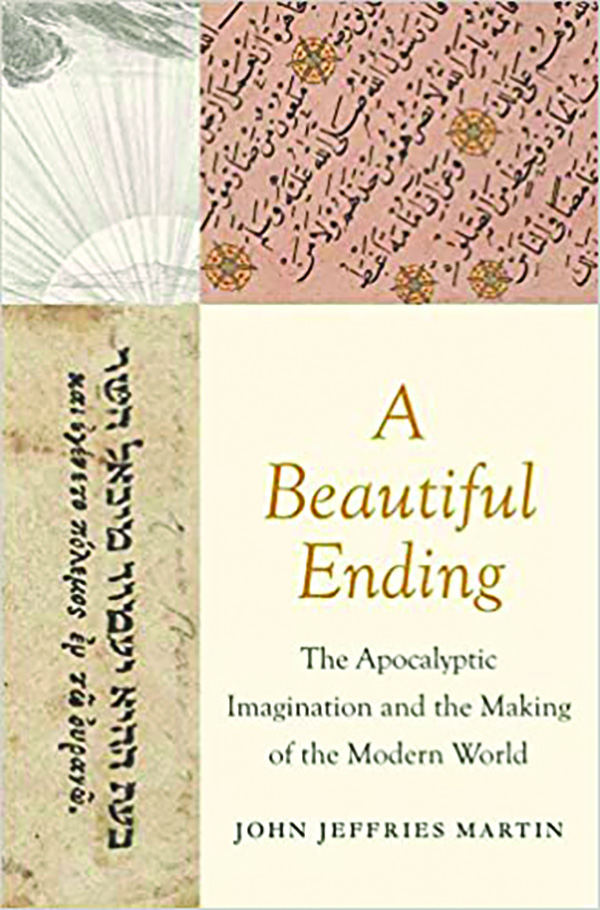Readers of A Beautiful Ending: The Apocalyptic Imagination and the Making of the Modern World, John Jeffries Martin’s arresting and wide-ranging new study of apocalypticism in the early modern period, will learn all kinds of new things about the beginning of the end of the world as we know it.

Science fiction, for example, that most progressive of literary forms, is apocalyptic. At the end of H.G. Wells’s The Time Machine, the nameless hero uses the titular contraption to transport himself to the end of the world. He doesn’t use the term, but the nightmarish scene he describes the hero confronting is the apocalypse. Wells’s pioneering 1895 novel would seem an odd candidate for apocalyptic literature. The Time Machine is an emphatically forward-looking book. Yet Martin, a history professor at Duke University, has a simple explanation for why even Wells, who invented a literary genre whose very name is a byword for modernity, couldn’t escape a way of thinking that is usually thought of as the opposite of modern.
What Martin calls the “apocalyptic braid” stretches back to antiquity, but it was only in the second half of the 15th century that apocalypticism became a distinct part of European culture. Martin’s narrative, therefore, focuses on the period from roughly 1450-1650. Though he proceeds chronologically, his chapters are thematic. He devotes each one to a separate topic, such as the advent of utopian literature, the rise of cartography, and the emergence of the idea that indigenous Americans were “cannibals,” in addition to major movements such as the Reformation. Along the way, the reader encounters household names such as Luther, Durer, Calvin, and Gutenberg, as well as less familiar people such as Michael Servetus, Tommaso Campanella, Isaac Luria, and Paracelsus, along with a parade of minor prophets, false popes, and would-be messiahs.
The promise of Martin’s approach can be seen in his discussions of Columbus and his impact. Martin convincingly portrays the great seafarer as a man steeped in millenarian thinking. After returning to Spain in 1493, he changed his signature to “Christoferens,” anointing himself the “Christ-bearer” who would bring Christianity to the New World. Later in life, he compiled a Book of Prophecies. Many such prophecies held that the spread of Christianity to the entire globe was a sign of the end. Thanks to Columbus, the world and the number of people in it needing salvation expanded greatly. As Martin shows, the maps and geographies produced to incorporate the new discoveries themselves became professions of faith.
A particular strength of Martin’s book is the attention he devotes to Islam and Judaism. A chapter on the idea of a “last world emperor” is divided equally between Charles II of Spain and Ottoman Suleiman the Magnificent. The Talmud, Torah, and commentaries on them feature prominently in his analysis of the role of the printing press in propagating apocalyptic texts.
The conviction that the end was coming and would be an experience of joy and wonder transcended cultural, social, national, and religious boundaries. Martin is at his most persuasive in showing the centrality not just of apocalypticism but of faith in general to everyday life in early modern Europe, something it isn’t easy for us secularized moderns to wrap our heads around.
The work is not flawless. There are some annoying typographical errors. Nor is Martin’s handling of his material always successful. While his thesis that millenarianism influenced the creation of utopian literature is plausible, his treatment is impressionistic and incomplete. And while Michel de Montaigne’s ethnographic and anthropological commentaries on Europeans and Americans are interesting, they feel tangential and out of place.
Martin’s story ends with two 17th century thinkers who each offered alternative ways of thinking about the world: Thomas Hobbes, whose political absolutism rejected religious ideas as products of human psychology, and Francis Bacon, whose insistence on experimentation and rejection of authority inaugurated modern science. Yet even Bacon, the forerunner of modernity that he was, remained loyal to the older way of thinking. As Martin observes, the motto on the frontispiece of Bacon’s Instauratio magna (1620) is Multi pertransibunt & augebitur scientia (“Many will pass through and knowledge will be increased”), an allusion to a passage from the Book of Daniel, which heralds such an expansion of intellectual commerce as a harbinger of the End Times.
We may no longer have the faith of our forebear, but we still have Armageddon, be it in the form of nuclear annihilation or global warming or political dissolution. Or in the form of destruction visited upon us from above as in Wells’s The War of the Worlds (1897), a story whose vision of planetary devastation is even more cataclysmic than The Time Machine. That Wells, messenger of the future, was in his own way a prophet of the apocalypse, is a testament to the enduring power of the apocalyptic imagination. We may no longer find it beautiful, but we still believe in the end of the world.
Varad Mehta is a writer and historian. He lives in the Philadelphia area. Find him on Twitter @varadmehta.

